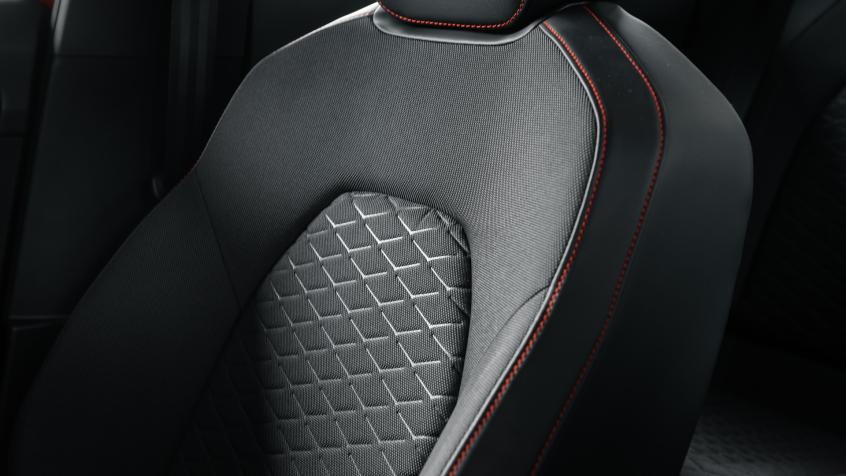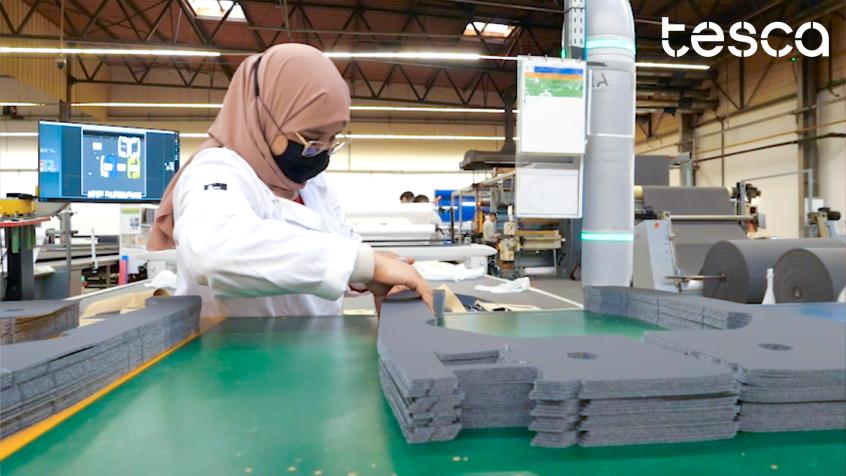Is your cutting room maintenance program future-ready?
6 best practices for Magna

The importance of maximizing machine availability in today’s context
In March 2020, almost the entire world went on lockdown in an attempt to flatten the COVID-19 curve, which has dramatically affected the automotive industry. In addition to the much talked about demand and supply shocks that they have experienced, the pandemic has made consumer behavior more unpredictable, with rising unemployment, market uncertainty and companies implementing new telecommuting policies. With such market volatility, automotive companies have to gain agility and flexibility in responding to temporary micro-trends by either producing in small batches or adjusting their product mixes. For example, experts have predicted that consumers will be more in favor of private transport, in the form of more compact and affordable cars during this health crisis.
In return, OEMs and Tier 1 vehicle interior manufacturers have to help their customers satisfy these complex consumer demands by ensuring that their cutting room is working at full speed, with minimal disruption and machine downtime. As profit margins are inevitably shrinking during the crisis, automotive seat manufacturers should focus on reducing costs in the cutting room, which all boils down to maintenance. Machine downtime is usually identified as a key factor in causing shortage of cut parts. But it also has hidden costs, such as delaying entire projects, premature discarding of equipment, an increased scrap rate, machine overuse, and not meeting consumer demand. And then there’s the worst case scenario – some breakdowns are so drastic that companies have to outsource a part of the cutting room process to other suppliers [1], which can be extremely costly and time-consuming.
[1] https://blog.ezofficeinventory.com/equipment-maintenance-best-practices/
Is your cutting room maintenance program up to par ?
Rethinking maintenance in the time of COVID-19
The ongoing pandemic has redefined the workplace – especially for factories where production lines have to be re-organized to follow new social-distancing rules [2]. With more rotating shifts involving fewer operators, round-the-clock maintenance is going to be more challenging as information gets lost from one shift to another, and machines are used more frequently. Companies can tackle this issue by implementing Industry 4.0-compliant technology that connects all equipment, operators and managers, so they can get data from every stage of the cutting process to detect technical problems and slowdowns, and forecast machine downtime and schedule a visit accordingly.
According to an article by ARC Advisory Group, predictive maintenance has proven to be the most effective in comparison to other methods such as run to failure, preventive, reactive and condition-based [3]. It also states that predictive maintenance (PdM) only costs half as much as preventive maintenance (PM), because companies only schedule visits when needed with PdM, just when there are warning signs of problems that might occur in the future. Predictive maintenance calls for more rigor in terms of data collection and analysis, but ultimately, it helps companies avoid reactive maintenance and reduce risks. While it should make up the bulk of your maintenance program, there can be other elements as well, such as a little bit of preventive maintenance and the utilization of OEE metrics. Here is a checklist of questions to see if your maintenance program is ready for the future.
[2] https://www.arcweb.com/blog/equipment-maintenance-still-required-during-covid-19-pandemic
[3] https://www.mckinsey.com/business-functions/operations/our-insights/industry-40-reimagining-manufacturing-operations-after-covid-19
The Checklist

Do you check your machines regularly?
Preventive maintenance is scheduled on a regular basis, which makes it more labor intensive than other methods. However, programming frequent cycles of system audits, planned downtime, lubricating and maintenance operations can help prevent major equipment breakdowns and production losses, lowering scrap rate and material waste. This method also prolongs your cutting time – which helps you become more productive in the long run.

Are your consumables long lasting?
To save time and money on repairs, you need to invest in quality, reliability and efficiency: this entails having good maintenance kits, long-lasting bristle blocks, and sturdy blades with sharpening bands on hand. With good quality kits, less maintenance is actually more - you can have a 30-hour increase in productivity if you change your consumables every 1,000 hours instead of 500. This can lead to a 7% increase in cost savings. By changing your spare parts within longer time frames, there will be less machine downtime and disruption, and hence, fewer errors made. A 100% increase in the lifespan of a blade and its sharpening bands, and 40% increase in a bristle block’s lifespan can lead to an 8.5-hour gain in productivity.

Do you have access to data? Can you monitor your cutting activities remotely?
During this health crisis, not every operator or cutting room manager can be at the same place at the same time, so it is important to gain a 360-degree view of the cutting process through a dashboard or system. By having a centralized platform to gather and share data coming from all cutting stages, you can keep track of your machine performance and availability, by using indicators such as cutting time, speed, production quantities and total amount of interrupted time. With a permanent monitoring system, you can detect machine behavior anomalies and get real-time alerts for critical errors. You can also establish KPIs for your team with the help of actionable data and identify areas of improvement.

Are your cutting machines safe and intuitive according to Industry 4.0 standards?
Operator safety has always been a priority for the automotive industry. When operators feel secure in their working environment, they tend to work faster and better. Industry 4.0 technology enables companies to drastically improve workplace safety and put the operator at the heart of the production process. It is hence essential to constantly upgrade your cutters and include automated safety features such as built-in sensors around the blade area, light beam radars, embedded cameras to detect blade wear and tear. They should also comply with international safety standards. The equipment itself should be intuitive and easy to use – to facilitate the onboarding process for newcomers and the everyday working life for operators. Improving the training process via quick wins and a step-by-step method will help your operators gain confidence and ample knowledge to use the machines with ease. Having a system to store data on your previous cutting jobs can help you transfer knowledge to new staff.

Are your cutters connected to your vendor’s technical support team?
A good maintenance program should include both online and on-site technical support. Your vendor’s technical team needs to monitor your cutting machines remotely, and provide extended hours of assistance. Receiving customer care and maintenance reports on a constant basis, being debriefed directly by your vendor’s customer care experts with metrics will help you get a clear picture of the current state of your cutting room and enable you to improve your maintenance strategy. Install sensors that help you collect, store and use data, and send warnings and alerts directly to your expert. He or she can then analyze the data, predict upcoming issues and plan the next on-site visit accordingly if needed. This helps prevent work disruption and further damage to your spare parts and consumables. With predictive maintenance, you are not just preventing errors – but also finding the root cause of your technical issues and eliminating it ahead of time.

Do you often use metrics to reevaluate your maintenance strategy?
The notion of continuous improvement should not just apply to the actual, physical condition of your cutting machines, but also the maintenance strategy itself. Are you focusing on the right machines? Should you replace some of them? Are you using the right method? Is your program getting too costly? Here are the questions that you should constantly ask yourself. Maintenance is something that should evolve with time – using outdated technology and metrics to tackle today’s technical issues might not be effective. Use data from your dashboard to identify and examine the gaps between predicted and actual performance. Benchmark yourself against the top performers; calculate your OEE score, the mean time spent on repairing machines, and the average waiting time between equipment breakdowns [4].
[4] https://blog.ezofficeinventory.com/equipment-maintenance-best-practices/

As you can see from the table above– the ideal maintenance strategy is a good and balanced mix of different methods with predictive maintenance as the key focus. However, maintenance aside, the cutting equipment itself should be best in class, and up to date, to begin with. The further the distance between you and your operators, the better the quality of your teamwork should be. Smart maintenance decisions should be made together with the help of data. By helping your company eliminate roadblocks and technical hiccups with a maintenance program that is best suited to its needs, you can achieve maximum productivity even during the most challenging times.







